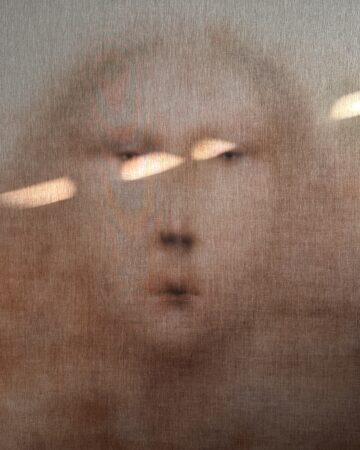

opening: July 4 (Friday) 6:00 pm
July 4 – August 23, 2025
curator: Martyna Stołpiec
installation: Jan Jurkiewicz, Piotr Surma
Jędrzej Bieńko presents his diploma project. This is a site-specific painting exhibition, following a tradition of spatial and immersive projects in which the picture is not just an object, it is an experience of space. Can an image become the whole horizon? Can it take our gaze and draw us into itself, until we lose our bearings?
Bieńko creates a hazy landscape woven from faces—while seemingly diffuse, they are omnipresent. This picture, which occupies all the walls of the gallery, will not let us remain on the outside; it magnetizes the gaze, but gives it no support. Its chief element is disquiet—the viewer feels observed. This is a space woven from presence, which, more evokes than depicts a sense of suspension, of disorientation, of being “in the middle” of something.
The picture becomes an event horizon—a border that, when crossed, does not mean anything returns to the wat it was. Just as in physics, where the event horizon fences us off from information within a black hole, here too the limits of the picture separate us from total knowledge. This is a landscape that sucks us in, and yet will not be transcended.